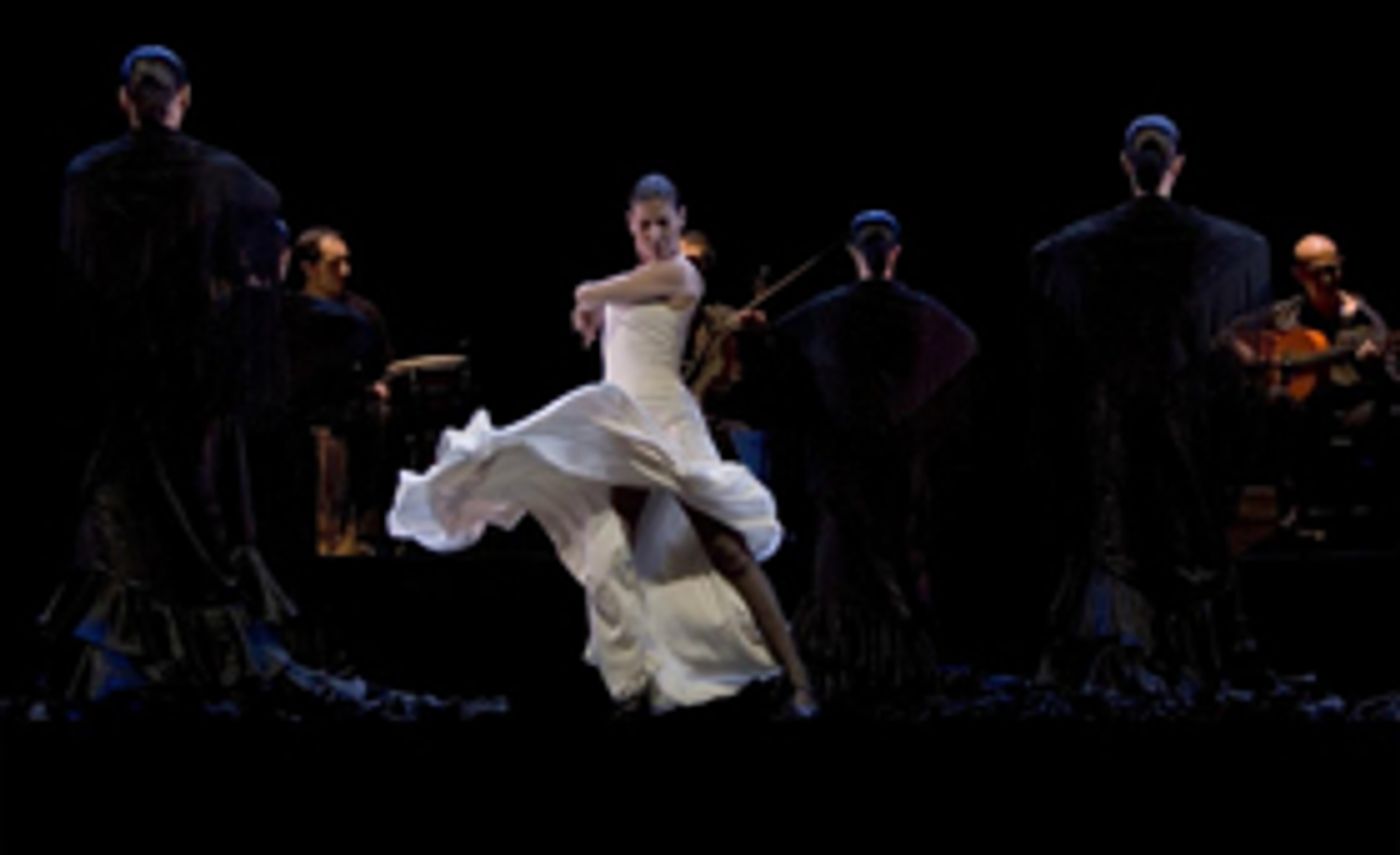Interview: Flamenco Superstar Sara Baras

One of the most illustrious artists from Spain, flamenco titaness Sara Baras is known around the world for her fiery grace and elegant precision. She returns to New York City Center, on March 7 - 10, with Shadows - a testament to female power and transcendence featuring La Farruca - a style of flamenco normally only performed by men. This timely and powerful work crowns Women's History Month, City Center's 75th Anniversary Season, and the 20th anniversary of her own company Ballet Flamenco Sara Baras.
Read on for an in-depth look at Shadows, the art of flamenco, and Baras's pivotal role in both.
Flamenco's roots have been described as "mysterious" with Moors and the Roma contributing to its history. Can you de-mystify us a bit?
Flamenco is an art form that comes from the mix of different cultures that met in Andalusia centuries ago. Thanks to our masters it has become a magnificent and unique artform, where technique melds seamlessly with emotion. Flamenco is all about heart.
How did you first discover flamenco?
I owe everything I have to my mother. She taught me to respect and love the flamenco art.
You're making your return to City Center for this performance. Do you have any fond memories of performing at the venue?
I have wonderful memories of this theater that I will never forget and I am so grateful to the City Center audience. I am super excited about returning with Shadows, and I will leave my heart and soul on the art temple that is City Center.
The significance of Shadows seems deeply personal as a show about overcoming figurative darkness. In particular, it seems to embrace the challenges you've encountered with La Farruca. Could you speak more about this?
Farruca is a flamenco style that comes from Galicia, the North of Spain. It is normally danced by men, and it has left its mark on me from the beginning of my career to now. It is elegant, deep, and risky. It exemplifies the union of technique and heart. It allows you to grow without any decoration, without hiding, exposing all the truth of who you are. Personally, I love it.
There's been a lot of exciting talk about what's actually going to be seen on stage-from visual art and fashion-forward costuming to unique instruments and untraditionally large dance ensembles. Can you spare any details?
Without sparing too much, I can say that an exciting, new element of Shadows is the art work that painter Andrés Mérida has created for the set of the show. Also, Ara Malikian has contributed music that was created specifically for the show. But, of course, the biggest treasure is my entire team, which makes all of this possible.
BWW: Flamenco is often compared to tap. City Center happens to be presenting another incredible female choreographer, tap artist Michelle Dorrance, later this month. Would you make this comparison? How is Flamenco similar to or different from tap?
I think that the similarities are the soul, the rhythm, and the idea that the dancer is also a musician. I love this about both art forms.
The relationship between the musician and the dancer seems to be unique in Flamenco. Can you tell us more about this?
The relationship between dancer and musician is very important in flamenco. In my experience, that connection is vital. The musicians and dancers play off one another and develop an ability to communicate without words. We all become one soul.
What's your vision for the future of flamenco and your role in it?
I can only see the expansion of flamenco, with more and more people being moved and touched by its power and emotion.
Thank you!
Visit NYCityCenter.org for tickets and more information about this and other great shows! Flamenco ticket holders are privy to pre-show, dance lessons taught by Xianix Barrera that will take place in the Grand Tier Lobby on Thursday, Friday, and Saturday night at 7pm.
Photo by Peter Muller Press
Videos

